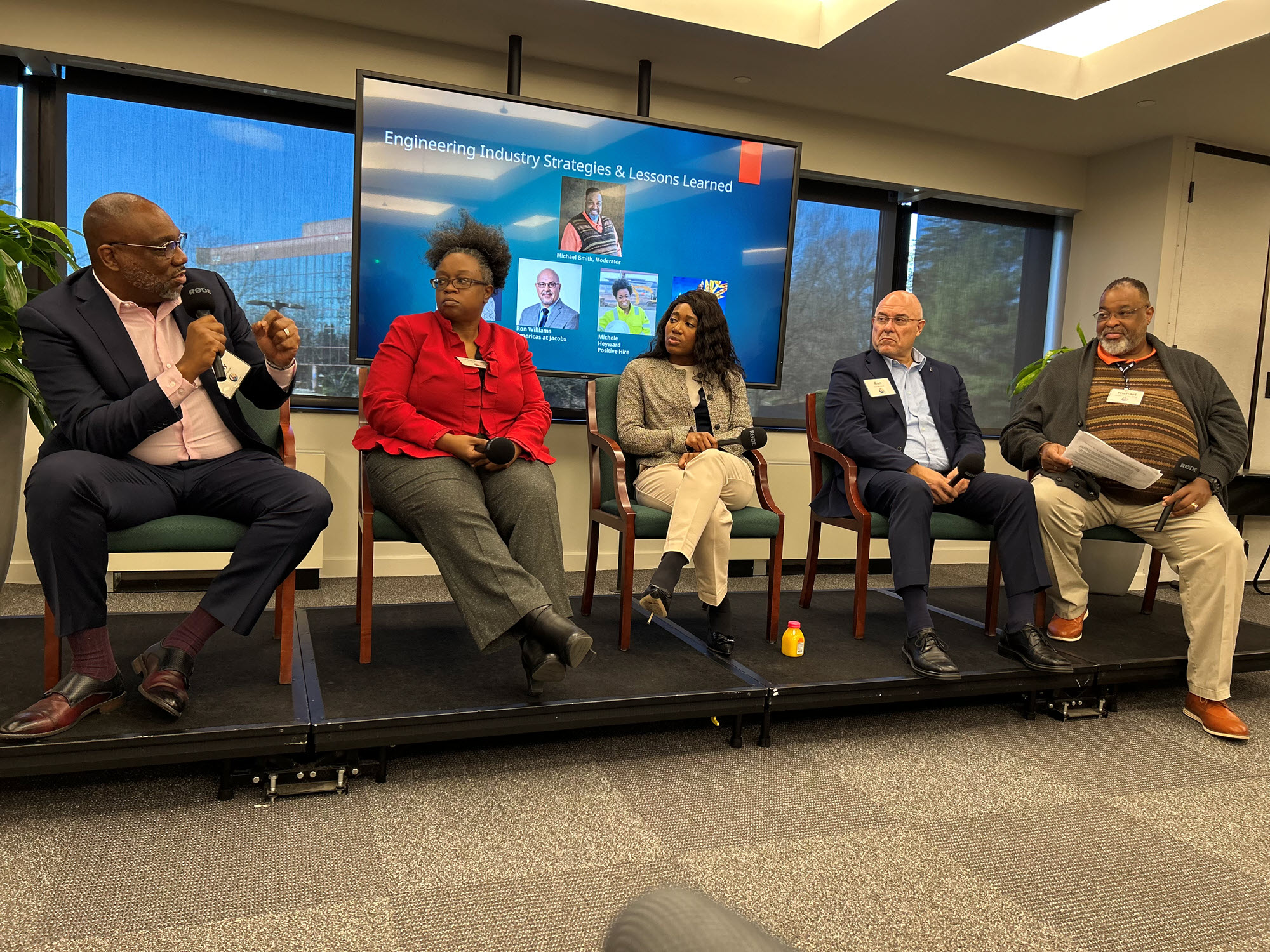
Engineering firms are racing to recruit talent from wherever they can find it.
Diversifying the workforce offers many benefits for these organizations, bringing new ideas from varying perspectives to light.
But reaching out to people of different backgrounds can pose challenges. In an increasingly data-driven world, leaders often turn to numbers to determine how they can propel diversity, equity, and inclusion efforts forward.
“What gets measured gets prioritized, and what gets prioritized gets done,” Ron Williams, senior vice president and general manager of Americas at Jacobs, said during a panel discussion at ASCE’s first-ever Justice, Equity, Diversity, and Inclusion Engineering Workforce Summit in December.
Senior executives, he continued, tend to have “very specific metrics around performance,” and hitting these goals is a marker of success for company leaders.
Funded by a grant from the United Engineering Foundation, the JEDI Summit brought together a wide range of engineers to discuss the benefits of workforce diversity and strategies engineering firms can use to uplift engineers from different backgrounds.
Numbers are only part of the story
Though numbers matter, turning data into action requires a human touch.
“What I've noticed is that … what the people that are getting it right are doing is harnessing the data. They're not just collecting the data, but they're using the data to better understand their DEI,” said Jennifer Todd, Aff.M.ASCE, president and founder of LMS General Contractors.
Sharing an example, Todd noted an uptick in tradeswomen moving to Alaska following the legalization of gay marriage, which made the area safer for queer women to live in. To reach this growing population, LMS began working with LGBT organizations to connect with women who may be interested in engineering careers.
“… If you aren't using the data to your advantage, and you're not asking why once you have the data, you can't really tap into those DEI components regardless of where you're at,” said Todd.
According to Michele Heyward, CEO and founder of PositiveHire, engineering firms must do two things to use data effectively: tell a story and believe in their data.
“We have to remember, you're still talking to a human … so it's really important that while we utilize the data, we have to be able to tie it in and understand that humans are still going to respond as humans, even though we say we want the data,” she said.
A major part of making this work is recognizing the metanarrative coming from the data and using that as a basis for storytelling, said Jody Moore, senior director of inclusion and culture at Amtrak.
Data is data, he continued, but how someone interprets it “goes a long way.”
“It's so important that your leaders are all on one page in alignment as to what we see in this data and if we agree that this is the metanarrative for this organization that's coming out of this data,” he said.
Social media opens new outreach opportunities
Organizations are increasingly engaging with students and other young people who may be interested in an engineering career. But to reach this group, engineering firms must adapt to modern methods of communication.
“You have to understand the population or the future that you’re trying to communicate with,” said Heyward.
Social media, now a staple in the day-to-day communications of young people, offers a pathway for organizations to get creative with their outreach.
“… I can tell you social media works. And we have to be able to understand where they are,” she emphasized.
When asked how organizations can change the narrative with young people, she highlighted one specific platform: TikTok.
The application's short video format means firms must be decisive when choosing what aspects of a career they want to showcase. Although TikTok now allows longer videos, its 15- and 30-second options provide an avenue for organizations to efficiently share impactful clips and sound bites. Many other social media platforms have adopted similar features.
“We are documenting our job sites every single day because you need to get paid, and you need to show that the work is done. Why are we not putting it on social media to show these kids what it actually looks like?” said Todd. “They want to see people who look like them and they want to know what engineers are doing every day, so they get it.”
Learn more about how ASCE is advancing DEI.
Learn more about civil engineering workforce development at ASCE.



